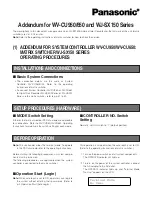
19-21
Catalyst 3560 Switch Software Configuration Guide
78-16156-01
Chapter 19 Configuring IGMP Snooping and MVR
Configuring IGMP Filtering and Throttling
You can also set the maximum number of IGMP groups that a Layer 2 interface can join.
With the IGMP throttling feature, you can also set the maximum number of IGMP groups that a Layer 2
interface can join. If the maximum number of IGMP groups is set, the IGMP snooping forwarding table
contains the maximum number of entries, and the interface receives an IGMP join report, you can
configure an interface to drop the IGMP report or to remove a randomly selected multicast entry in the
forwarding table and then to add the IGMP group in the report to the table.
Note
IGMPv3 join and leave messages are not supported on switches running IGMP filtering.
These sections describe how to configure IGMP filtering and throttling:
•
Default IGMP Filtering and Throttling Configuration, page 19-21
•
Configuring IGMP Profiles, page 19-22
(optional)
•
Applying IGMP Profiles, page 19-23
(optional)
•
Setting the Maximum Number of IGMP Groups, page 19-24
(optional)
•
Configuring the IGMP Throttling Action, page 19-24
(optional)
Default IGMP Filtering and Throttling Configuration
Table 19-7
shows the default IGMP filtering configuration.
When the maximum number of groups is in forwarding table, the default IGMP throttling action is to
deny the IGMP report. For configuration guidelines, see the
“Configuring the IGMP Throttling Action”
section on page 19-24.
Table 19-7 Default IGMP Filtering Configuration
Feature
Default Setting
IGMP filters
None applied
IGMP maximum number of IGMP groups
No maximum set
IGMP profiles
None defined
IGMP profile action
Deny the range addresses
















































